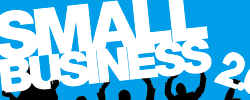
Popular Reading

Profit And Loss Account
With the balance sheet there will be a profit and loss account. The accounts of many public companies do not show all the details of how the profit figure is arrived at, but they do show turnover (total sales), and usually the direct operating costs together with all the remaining expenses in total. Net profit before tax is always shown. One can take a view on the ability of the company to continue paying dividends at the current rate, or to increase that rate, by comparing total net after-tax profits available for ordinary shareholders with total dividend. If profits are being retained in the company there is a prospect for growth, providing that adequate provision is being made for maintaining the real value of the company.
DEF LTD
Simplified Balance Sheet
Liabilities £ Assets
Shareholders' funds Fixed
Issued share capital of Premises and machinery 310,000
500,000 ordinary 50p Patents 61,000
shares 250,000 371,000
Reserves 225,000
475,000
Long-term liabilities Current assets
Bank loan 100,000 Stocks of
Provision for tax 51,000 151,000 material 172,000
Current liabilities Stocks of goods 53,000
Sundry creditors 25,000 Sundry debtors 20,000
Cash at bank 35,000 280,000
651,000 651,000
Profit and Loss Appropriation Account
Net profit before tax 108,500
Provision for tax 51,000
Net profit after tax 57,500
Dividend paid 37,500
Transfer to Reserve 20,000
57,500

Balance Sheets
Companies whose shares are officially quoted on the Stock
Exchange have to publish full accounts at the end of their trading (ear, and an interim report halfway through the year. How to read t company balance sheet is discussed in Chapter 14. Here we shall ooutline some of the facts that a would-be buyer of shares can learn 'from the published accounts. A specimen simplified balance sheet Ind profit and loss account appears opposite.
It is customary for a company's assets to be listed on the right-hand side of the balance sheet, and the liabilities on the left. One of he liabilities... see: Balance Sheets